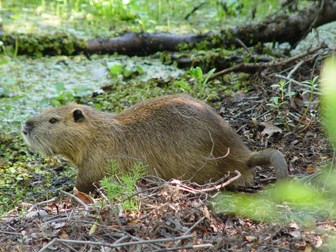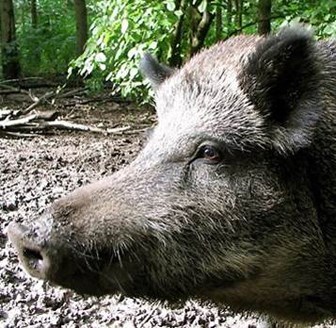
As people have traveled around the world, they have brought plants and animals from their old homes to new places---sometimes on purpose, sometimes by accident. Some plants and animals were deliberately introduced as food sources, as pets, or as ornamental plants. Some arrive by accident on boat propellers or in shipping containers. When non-native species start to crowd out native species, they become invasive species. Worldwide, introduced species are one of the major factors in habitat destruction and contribute directly to species extinction. Louisiana has many problems with non-native species. In a 2009 report ranking the relative risk that non-native pests posted, the US Department of Agriculture ranked Louisiana as the ninth most-invaded state. A healthy ecosystem requires a balance of plants, insects, herbivores (plant-eating animals), and carnivores (meat-eating animals) which have evolved together in a system that works with the local environment. Non-native species often throw off the balance by out-eating, out-breeding, or otherwise competing with local species, and the loss of those local plants and animals is a serious threat to global biodiversity. Biologically speaking, Louisiana's Gulf Coast is positioned on the edge of the subtropical community. It is also part of the Mississippi River Flyway and home to over 400 species of plants and 200 species of birds. Louisiana's wetlands sustain some of the most productive fisheries and waterfowl populations on the planet. Invasive species and their control cost millions of dollars to land managers---and taxpayers and consumers---around the world. At Jean Lafitte, invasive species are not only costly but also a daily threat to the area's native biological richness and to human uses of those riches. By learning about the impact of invasive species, we can also learn about the importance of the species native to the area and appreciate all the riches that south Louisiana holds. South Louisiana is an easy place for many plants to thrive: humidity and a long growing season mean that many plants grow faster and bigger than they would elsewhere, and many non-native species quickly become invasive species. At Jean Lafitte's Barataria Preserve, humans have used the land for hundreds of years for farming, logging, and oil and gas exploration. As more people move near the preserve, more seeds from ornamental plants wind up in the preserve, carried by birds, the wind, or even on visitors' shoes. Many of the Barataria Preserve's plant and animal invaders come from South America and other subtropical areas; since Louisiana's Gulf Coast sits on the edge of the subtropics, invaders from similar climates tend to thrive here. The successful invaders often are not used as food by native animals, so there is little control on their populations. 
Craig Hood Invasive Species at the Barataria Preserve
Invasive plant species found at the Barataria Preserve include:
Invasive animal species can also be found at the preserve and include:
How can YOU help?
|
Last updated: December 3, 2021
